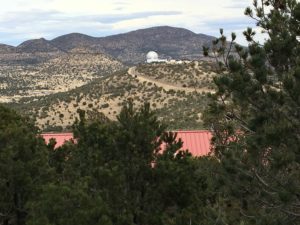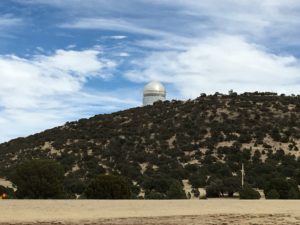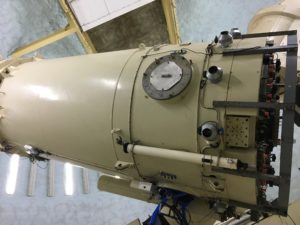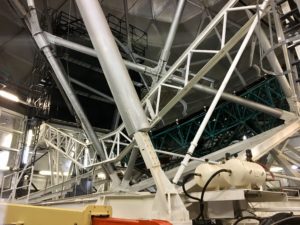Whenever I was in conversations leading up to this year’s trip, invariably the similarities of this year’s route to last would come up. Much of that is driven by simply hugging the southern rim of the country for the warmest weather. But in those conversations I would almost always say, “I saw an awful lot of stuff last year, but I also drove by a lot of stuff”.
The McDonald Observatory was one of those things. When I was in west Texas last year my focus and time was mostly spent on Big Bend National Park. This year I wanted to be sure to visit this site and ended up going there twice, once at night for what they call the Star Party, and the other in the afternoon to tour the two largest telescopes and view the sun on a video screen. The latter being a remote feed from a telescope in Germany.
The McDonald Observatory site spans two prominent peaks in the Davis Mountains, Mt. Locke and Mt. Fowlkes. It gets its name from William Johnson McDonald, who in his will in 1926, left a million dollar grant to the University of Texas for the expressed purpose of building an observatory. Problematic in all of this was the fact that, at the time, the university didn’t have an astronomy department. A partnership was born with the University of Chicago which lasted until the 1960s. The first of its major telescopes was dedicated in 1939 and was eventually named for Otto Struve of the University of Chicago who served as the first director of the site. At the time it was the second largest telescope in the world.
Partnering with NASA, the Harlan J. Smith telescope was completed in 1968, and at the time it was the third largest telescope in the world. BTW, the size of a telescope is determined by the diameter of its reflective surface. The Smith telescope is 107 inches (2.7 m), and I believe I’m correct in saying that it is one of the last major telescopes built with the “big ‘ol tube” approach to its design.
The “big kahuna” at McDonald is the Hobby-Eberle Telescope. It was brought on line in 1996, upgraded in 2015, and is currently the third largest scope in the world, measuring 320 inches (9.2 m). As you can see, there is no tube here. The design is open frame work and the reflective surface is mounted on the green racking that you see in the photo. Instead of the old school design of one large mirror surface, this one is actually 91 hexagonal panels. This design reduces construction and maintenance costs dramatically. This telescope is about to embark on a three year project called the Dark Energy Experiment. The hope is to be able to measure the expansion of the universe over time.
When you go to the programs at McDonald you are absolutely blitzed with information, way more than can be absorbed. Especially by a non-scientific mind like mine. The passion of the people who live and work here is something to be admired. I learned a lot and being able to look at bodies that are thousands of light years away is fascinating. But I also learned that when it comes to stars, I’m a naked eye guy. Being able to look at the whole panel of art that is the sky at night, is where I’m at.
As usual, if you are so inclined, there is tons of information on line about observatories, telescopes, and astronomical research projects past and present.



